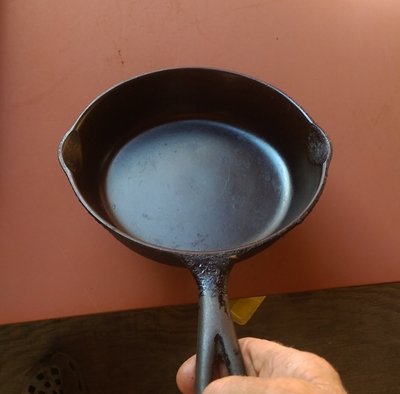
If you are into sustainability, there is nothing more durable than cast iron cookware. I inherited my mother's cast iron frying pan she got as a wedding present. My parents were married in 1929! If anything, that pan is in better shape now than when it was new.
It came as part of a two-piece set: a frying pan and a griddle. I remember the day in the 1960s that mom spilled water on her overheated griddle, cracking it. She looked at it for a minute and then burst into tears. As a child I was a bit perplexed, but as an adult I understand. It wasn't the pan she was crying about. She had cooked countless breakfasts, pancakes, eggs, sausages for my father and my two sisters and me on that griddle. My father had died two years before and both of my sisters were married and moved away. She was crying for an old life that couldn't be touched, for all the good memories tied up in that cast iron griddle that was now, like the other memories, relegated to the past. But that's a story for another post.
That's why this pan is special to me. That's one reason why I want to take good care of it.
Practically the only thing that can hurt a cast iron pan (besides neglect) is a super-hot pan that encounters water. Other than that, it's bullet proof. (literally) I once found an old griddle in a trailer that had burned completely to the ground. The only thing left of the trailer was the underfame, and that was bent and twisted from the heat. I found the pan buried under a bunch of ashes. It was a bit rusty, but in otherwise good shape. I brought it home, cleaned it up and conditioned it and within a few weeks it was as glossy and black as my other cast iron cookware. It had been to Hell and back.
Properly cared for cast iron cookware is unsurpassed in retaining and distributing heat. The surface should be as glassy and non-stick as teflon, and since teflon is a environmental pollutant that is routinely showing up in the placental blood of unborn fetuses, I wouldn't use a teflon pan to cook food for my dog.
What makes a good cast iron pan's surface so non-stick is a layer of carbon. When you cook, some of the food breaks down into carbon and infiltrates tiny pores in the pan, forming a slick surface. A bit of oil increases its effectiveness. If you wash your pan with soap and water, you wash away the oil and the carbon and the pan begins to rust. So here's the method that I use to place my cast iron cookware at the front line of my cooking chores.
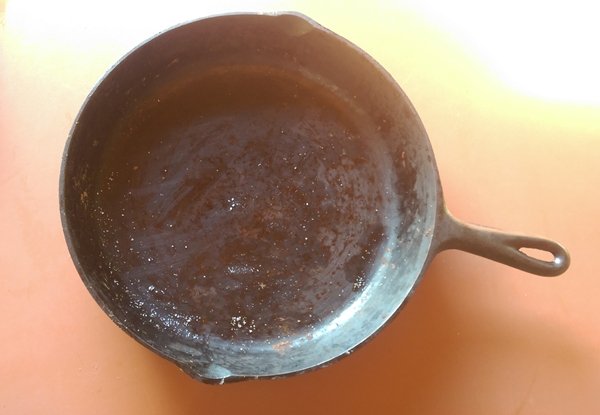
The process is simple and best done right after cooking as soon as the pan is cool enough to handle.
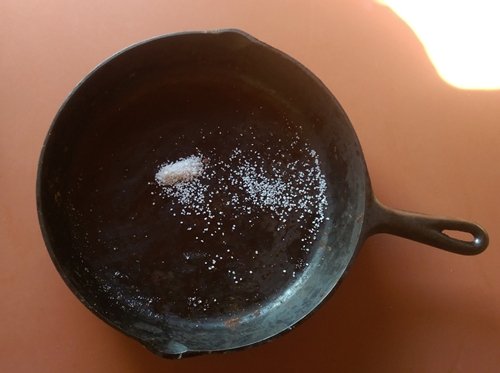
Place a bit of rock salt in the bottom of the pan. The amount depends on how dirty the pan is. This salt is your scouring agent.
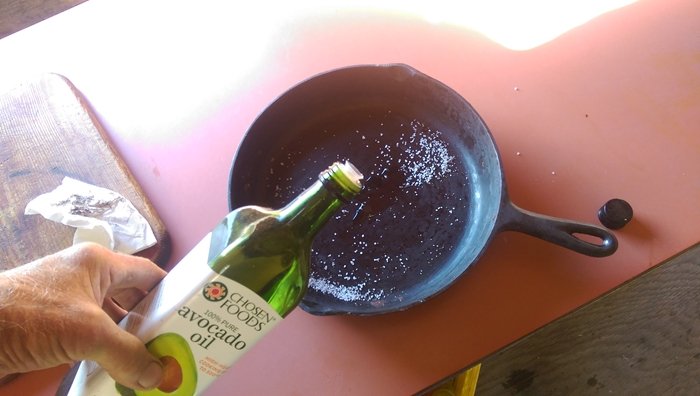
Add a bit of oil. Any oil or fat will do, but I try to use an oil with a high smoking point, as long as it's edible. Motor oil is a no- no.
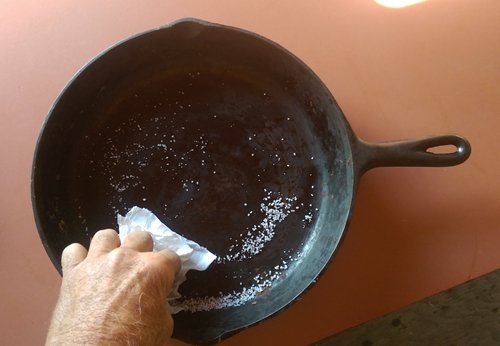
Use a paper towel to scrub the salt into the surface to remove excess crusted food and to polish the pan. The paper towel will turn black. Don't get disgusted and think that it's dirt. That's the carbon that makes your cast iron pan smooth. Keep scrubbing until the towel slides around easily and encounters no resistance. Dump out the salt and polish the pan with a paper towel to remove excess oil.
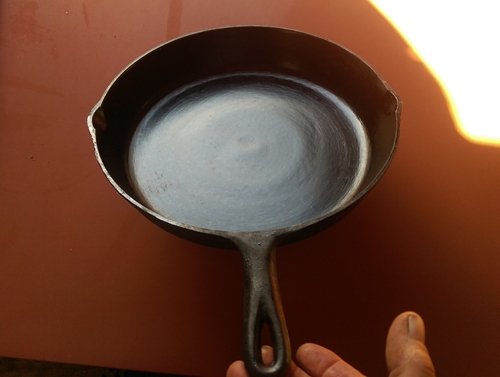
There you have it, a perfectly seasoned frying pan. May it last another hundred years!
